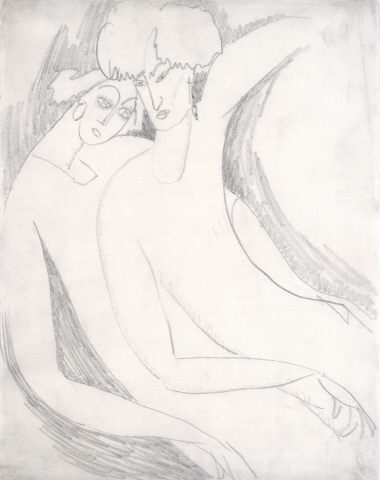
Amadeo de Souza-Cardoso
sem título
Manhufe, Portugal, 1887 – Espinho, Portugal, 1918
Amadeo was born in his parents’ farm in Manhufe, Amarante (Portugal), in 14 November 1887. He grew up among nine siblings, in a wealthy family of rural proprietors. He spent his childhood between the house in Manhufe and the summer resorts at the Espinho beach. There he met Manuel Laranjeira, a friendship that was decisive to fuel the practice of drawing, which Amadeo developed in Lisbon as part of the preparatory studies in Architecutre at the Lisbon Academy of Fine Arts. This was in 1905.
The trip to Paris, in November of the following year, in the company of Francisco Smith, had no fixed return date. Financed by his parents, Amadeo settled in at Boulevard Montparnasse and made preparations for the contest to the École des Beaux Arts. However, the Parisian atmosphere reinforced his inclination for drawing and caricature, thus contributing to remove himself apart definitively from the field of Architecture. Particularly influenced by the illustrations circulating in the French press, Amadeo would soon enough devote himself to drawing and painting.
The first years of Amadeo’s stay in Paris were marked by the social interactions with other Portuguese émigrés. The studio he rented at 14, Cité Falguiére became a place for gatherings and bohemia, with the frequent presence of artists such as Manuel Bentes, Eduardo Viana (who went with him on a trip to Brittany in 1907), Emmerico Nunes, Domingos Rebelo and Smith. These regular get-togethers did not last long. With the end of 1908, and beginning of the following year, came important changes to Amadeo’s life: he met Lucia Pecetto (1890-1989), who he married in 1914, and he began attending the classes by Spanish painter Anglada-Camarasa (1871-1959) at Academia Viti. He then moved his studio to rue des Fleurus, to a space contiguous to Gertrude Stein’s apartment. These changes might have helped to distance him from the circuit of Portuguese artists. But that voluntary detachment seemed to convey, primarily, a rupture at the visual level and a willingness to break with the “belated routine” he attributed to them. The level of exigency and commitment to the work that he was already producing by then, placed him in a realm that was unparalleled in Portuguese painting, since Amadeo plunged deeply into the investigations of the International Modernism being developed in Paris. It is in that context of formal research that, in 1910, we shall find him excited about the paintings of the Flemish “Primitives” (over a 3-month stay in Brussels). It is also in this period that we find him solidifying his friendship with Amedeo Modigliani (1884-1920).
In 1911, Amadeo moved his studio once again. He relocated close to Quai d’Orsay, at rue du Colonel Combes. In October, he took part in an exhibition with Modigliani in this space. This was not, however, the first show of his oeuvre. Some months before, Amadeo had displayed a collection of 6 paintings at the Salon des Indépendents. He would exhibit there again in the following year and in 1914. Likewise, he showed his work at the Salon d’Automne between 1912 and 1914. In the meantime, his circle of friends and acquaintances increased and became more international. He met Umberto Boccioni, Gino Severini, and Walter Pach, who later invited him to participate at the Armory Show. He was also in contact with Juan Gris (1887-1927), Max Jacob (1879-1944), Sonia and Robert Delaunay, Brancusi (1876-1957), Archipenko (1887-1964), Umberto Brunelleschi (1879-1947) and Diego Rivera (1886-1957), among others.
Amadeo’s interest in drawing consolidated throughout this period with the preparation of the illustrated manuscript of Flaubert’s Légende de Saint Julien L’Hospitalier* and the publication of the XX Dessins album (reissued by CAM in 1983), with a preface by Jérôme Doucet, which earned a very favourable judgment by the renowned critic Louis Vauxcelles.
Amadeo would also endeavour to showcase his painting outside of the Parisian circuit. The contacts he established during these years would allow him to participate in a series of important group exhibitions, among which the famous International Exhibition of Modern Art in 1913, also known as the Armory Show, that displayed European modern art for the first time in the USA (New York, Chicago and Boston). Amadeo submitted a total of eight works, alongside Braque (1882-1963), Matisse, Duchamp (1887-1968), Gleizes (1881-1953), Herbin and Segonzac (1884-1974). Three of his canvases were bought by the Chicago collector Arthur J. Eddy, who, upon publishing Cubist and Post-Impressionism (1914), cited and reproduced some of the works by the Portuguese painter, giving him prominence because of his colouring. Other important contacts would take Amadeo to Germany. In September 1913, after yet another studio relocation (which led him to settle in Montparnasse, at rue Ernest Cresson), he would be represented at the I Herbstsalon in Berlin, organized by the Der Sturm gallery. Amadeo had already worked with this Berlin gallery in November 1912, when he first exhibited in their space. It is highly likely that in 1914 he participated in shows in Cologne and Hamburg, and it is certain that, in April of the same year, he sent three works to the Royal Academy of Arts in London, although this exhibition was to be cancelled as the War broke out.
Also in 1914, before leaving Paris to spend the summer in Portugal as usual, Amadeo moved his studio to Vila Louvat, at 38 rue Boulard. However, he would never use this space. After a brief stay in Barcelona where he visited his friend, the sculptor León Solá, and met Gaudí, Amadeo returned to Manhufe where he was surprised by the outbreak of the War, which kept him from going back to Paris.
Amadeo’s forced stay in Portugal was not tantamount to a creative apathy. If, whilst in Paris, his work had explored the fields of abstraction, and then followed through paths compromised with Expressionism, the exile in Portugal would end up becoming a moment of full maturity in his painting, approaching many of the questions that were raised by the domain of collage.
In 1915, the isolation of Amadeo in Amarante was broken by the contact with Sonia and Robert Delaunay, as they were both also unexpectedly brought to settle in Vila do Conde because of the War. It was through them that his circle of relations recuperated Eduardo Viana, and extended to Almada Negreiros. Within this cluster of friendships, diverse projects would coalesce, namely the creation of a Corporation Nouvelle destined to promote international touring exhibitions, an idea which never came to fruition. Meanwhile, through Almada, Amadeo got in contact with the group of the Lisbon “Futuristas,” initially gathered around the Orpheu magazine.
In the struggle to stir things up in the Portuguese artistic milieu, Amadeo played a discreet, yet relevant role. By the late 1916, in a known interview he gave to the O Dia newspaper, he largely paraphrased Marinetti’s manifestos. Not that the propositions of Futurism captivated him as a formal solution. The radical, modernist stance associated with this movement in Portugal, was nevertheless convenient to Amadeo, as a means of intervention and a conduit to break with the dominant traditionalist structures, which had attacked him on occasion of the only two exhibitions he made in Portugal before his death.
In December 1916 Amadeo promoted, first in Porto and then in Lisbon, an exhibition for which he had gathered 114 paintings under the title Abstraccionismo. The mismatched aesthetic culture in Portugal foiled a favourable reception of Amadeo’s pictorial propositions, and these shows acquired an aura of scandal (marked, in the extreme, by a physical assault to the painter). It is important to emphasize, in this context, the central role taken by Almada Negreiros and Fernando Pessoa in his public defence. Both recognised him as the most significant painter of their time. But these were, notwithstanding, eccentric and isolated manifestations.
In October 1918, Amadeo died in Espinho, the victim of an epidemic of pneumonia which erupted that year. He was only 30 years old.
Joana Cunha Leal
May 2010
* The manuscript is part of the CAM collection. In 2006, on occasion of the exhibition Amadeo de Souza-Cardoso – Diálogo de Vanguardas, CAM and Assírio & Alvim published it in a facsimile edition, under the title A Lenda de São Julião Hospitaleiro.

sem título

sem título
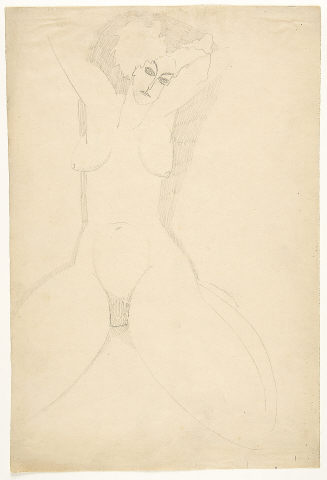
sem título

sem título

Vida dos Instrumentos

Untitled

Untitled

Untitled

Untitled

LE MOULIN [The Windmill] (Drawing nº15 for the album ” XX DESSINS” )

sem título

Title unknown (Azenha)
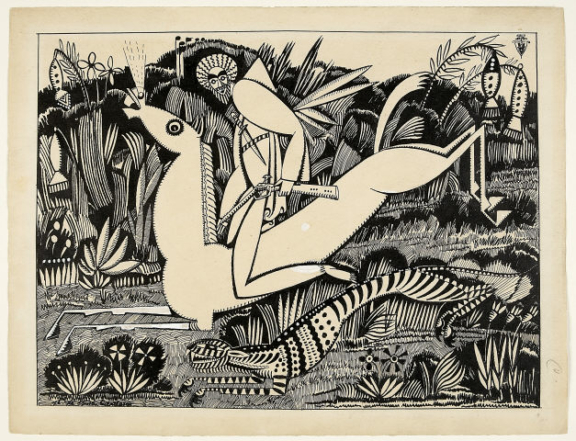
LE TIGRE (Desenho original para o album XX DESSINS,1912)

Untitled

sem título

Ar livre nú

Title unknown

UNTITLED (STUDY FOR THE PAINTING “GALGOS”/ “THE GREYHOUNDS”)

Untitled

LES CHEVAUX DU SULTAN [The Sultan’s Horses] (Drawing nº 19 for the album “XX DESSINS”)

Untitled

Title unknown (Clown, Horse, Salamandra)

sem título

Sem título

sem título

ÉTUDE DU NU (Desenho Nº 8 para o álbum “XX Dessins”)

Title unknown

TÊTE [HEAD]

Title unknown (Study for ‘Expositions Mouvantes – Corporation Nouvelle’)

Untitled

Title unknown

Frontespício e Data para o Album XX Dessins

Sem título

LA DÉTENTE DU CERF (Desenho original para o album XX DESSINS, nº 14,1912)

Untitled

LE BAIN DES SORCIÉRES (Desenho nº 10 para o álbum “XX Dessins”)

Untitled

Untitled

Brazões das cidades de Nantes e Angers [Coat of Arms for the Cities of Nantes and Angers]

Untitled

Oceano vermelhão azul cabeça AZUL (continuidades simbólicas) Rouge bleu vert

LES CHEVAUX DU ROI (Desenho original para o album XX DESSINS, nº 13)

Untitled

MULHER DECEPADA BRISEMENT DE LA GRÂCE CROISÉE DE VIOLENCE NOUVELLE

Title unknown

Untitled

Untitled

Untitled

Untitled

Sem título

sem título

Title unknown (Head)
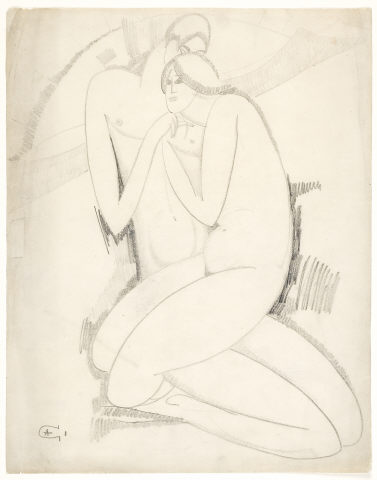
Untitled

RETRATO PAYSAGEM

Untitled

Mucha

Armes de Bretagne [Coat of arms of Bretagne]

Untitled (Study for the Painting ‘Galgos’ / ‘Greyhounds’)

CRISTAL PARTIDO CORAÇÃO DIAMANTE [BROKEN CRYSTAL HEART DIAMOND]

Untitled

Étude A

Brazões das cidades de Rennes e Saint – Malo

sem título

Title unknown
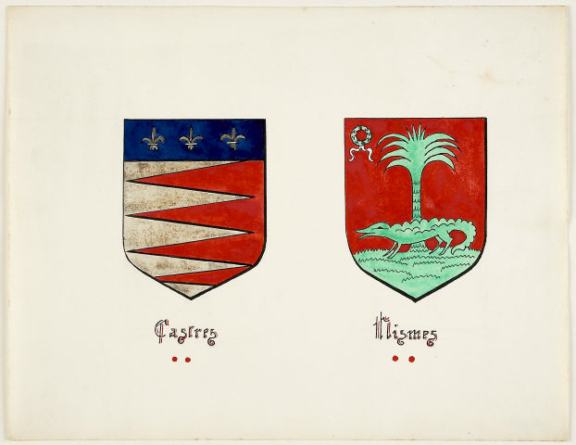
Coat of Arms for the cities of Castres e Nimes

31 DRAGONS cavallerie

Untitled
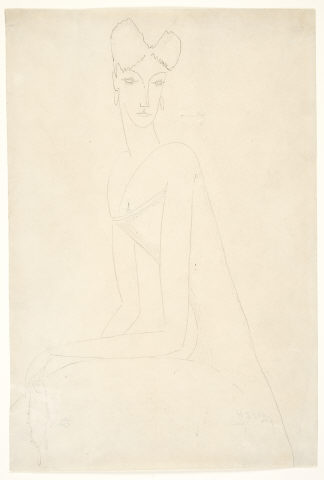
Untitled

Brazões das cidades de Bordeaux, Montauban e Agen [Coat of Arms of the Cities of Bordeaux, Montauban and Agen]

Canção d’açude – poema em cor [Song of Açude – A Poem in Colour]

Untitled

“L’ Athlète”

Sem título

Title unknown

Coat of Arms of the cities of Draguignan and Toulon
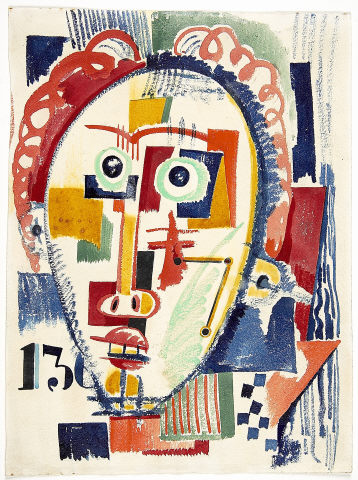
Tête OCEAN

Untitled

Untitled
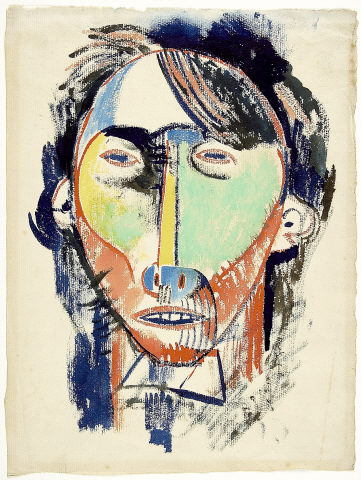
Untitled
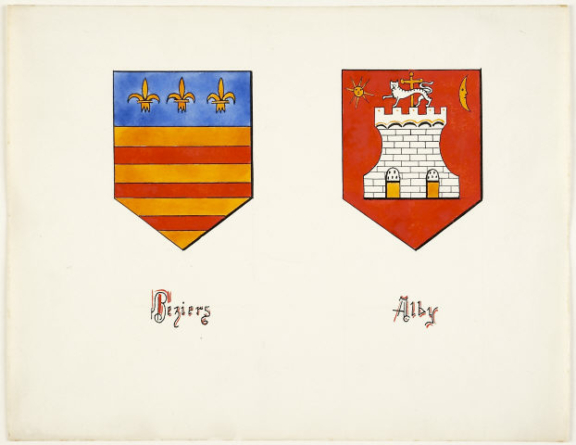
Brazões das cidades de Beziers e Alby [Coat of Arms of the Cities of Beziers and Alby]

Title unknown (study for ‘Expositions Mouvantes da Corporation Nouvelle’?)

Untitled

Avant la corrida

Brazões da cidades de Vannes e Lorient
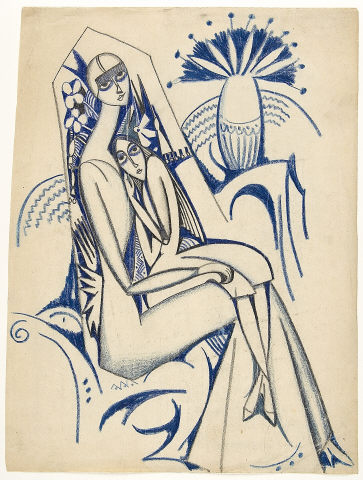
Untitled (Mother and daughter) Study for the drawing of the album XX DESSINS, Nº 5

sem título

Frontispício (não utilizado) para “La Légende de Saint Julien L´Hospitalier” de Gustave Flaubert
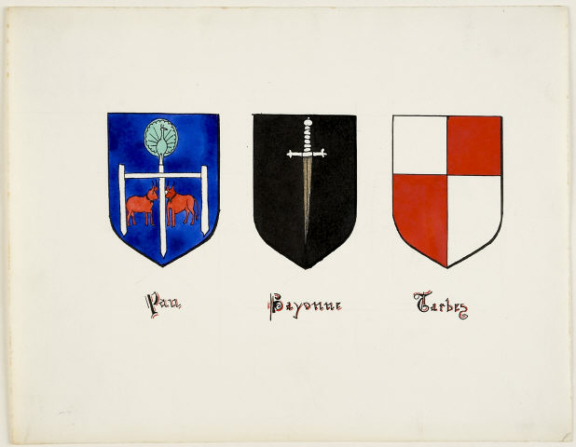
Brazões da cidades de Pau, Bayonne e Tarbes [Coat of Arms of the cities of Pau, Bayonne and Tarbes]

Untitled

Brazões das cidades de Montpellier e Narbonne [Coat of Arms of the cities of Montpellier and Narbonne]

Brazões das cidades de Saint-Briene e Quimper [Coat of Arms of the Cities of Saint-Briene and Quimper]

Le Prince et la Meute

L’ATHLÉTE [The Athlete] (Drawing nº 6 for the allbum “XX DESSINS” )

Gustave Flaubert – La Légende de Saint Julien L’Hospitalier

Sem título

Casa rustica

Untitled
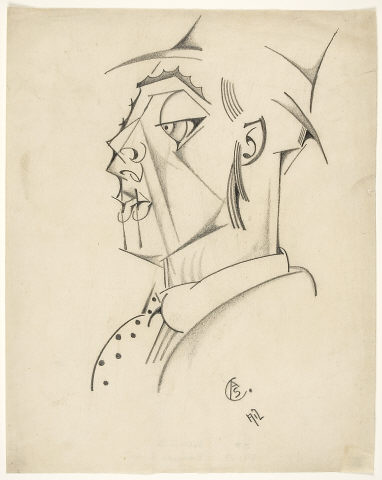
Portrait of Eduardo Viana

sem título

Untitled

Title unknown (BRUT 300 TSF)

Untitled

Untitled

Untitled

Title unknown

Untitled

Sem título

sem título

Untitled

Untitled

sem título

Untitled

Untitled

Força amor raiva [Strength love rage]

LE TOURNOI [The Tournament] (Drawing nº 17 for the album ” XX DESSINS” )

sem título

Untitles

Untitled
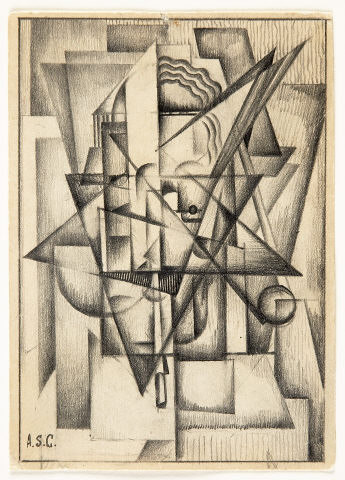
Untitled

La forêt merveilleuse (Desenho nº 2 para o álbum XX DESSINS)
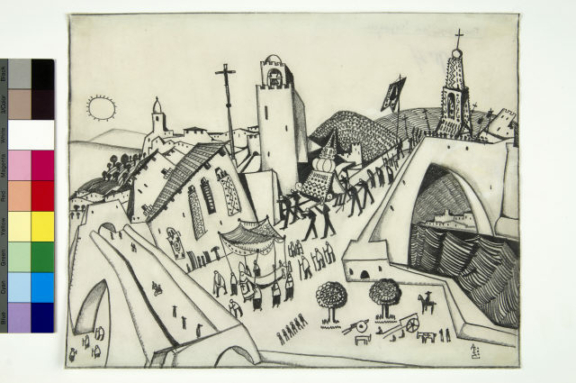
Untitled
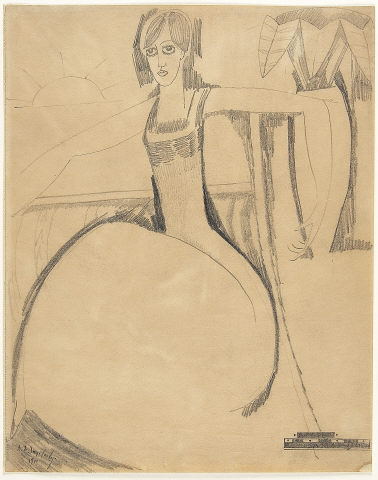
Untitled

Sem título

Retrato do Dr. Pallazzoli

Sem título

LA TOURMENTE (Original drawing for the album XX DESSINS,1912)

LITTORAL head

Brazões das cidades de Saummur e Laval

Untitled

Untitled

A chalupa
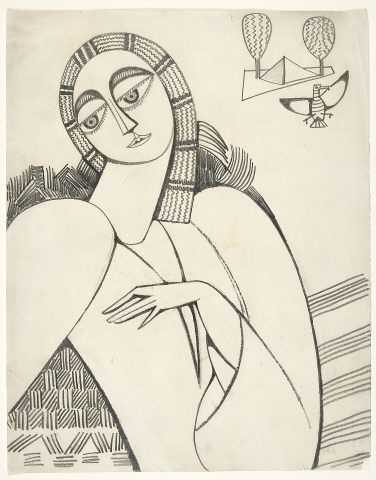
Sem título

Sem título

Sem título

Untitled

Brazões das cidades de Toulouse, Auch e Mont-de-Marsan

Title unknown

SKETCH PAD (24 PAGES)

Untitled

"Cosinha da Casa de Manhufe"

(D. Quixote)

Brazões das cidades de Arles e Marseille

Title unknown
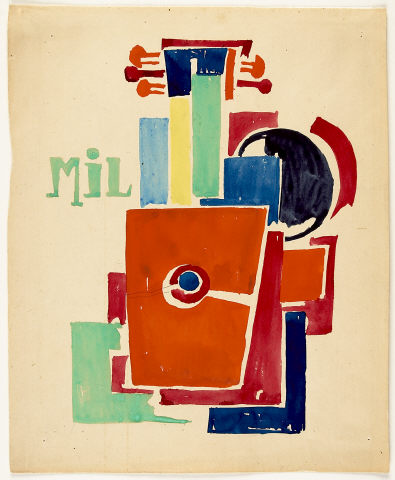
sem título

sem título

Sem título

Ex – Libris

Untitled

Untitled

(Paysagem figura negra)
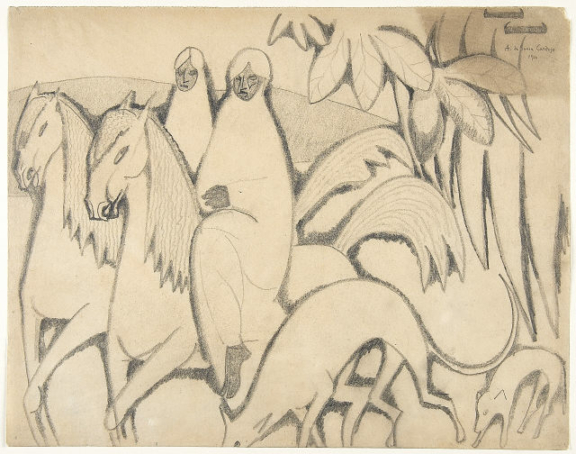
Untitled

Brazões das cidades de Uzes e Aix

Trou de la serrure PARTO DA VIOLA Bon ménage Fraise avant garde

sem título
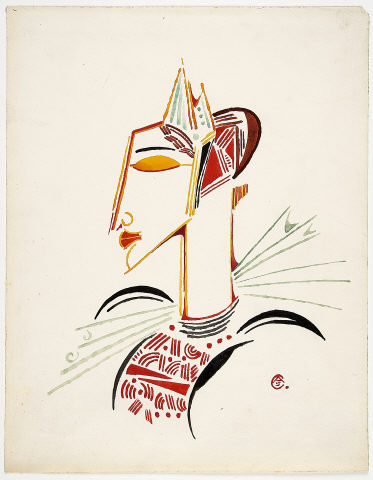
Sem título

Untitled
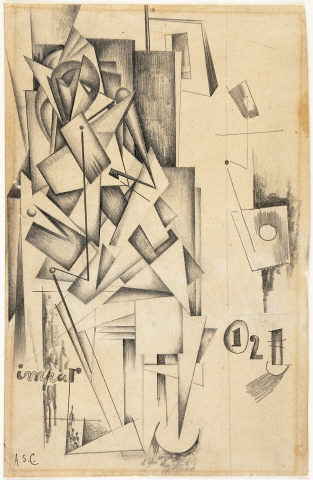
ÈCOLIER (dessin)

Janellas e postigos

Untitled

Untitled

Untitled

Untitled